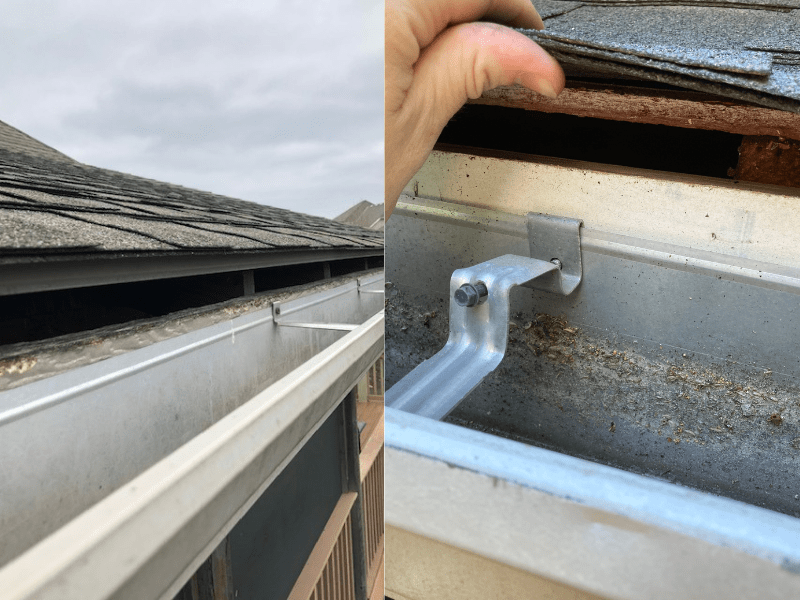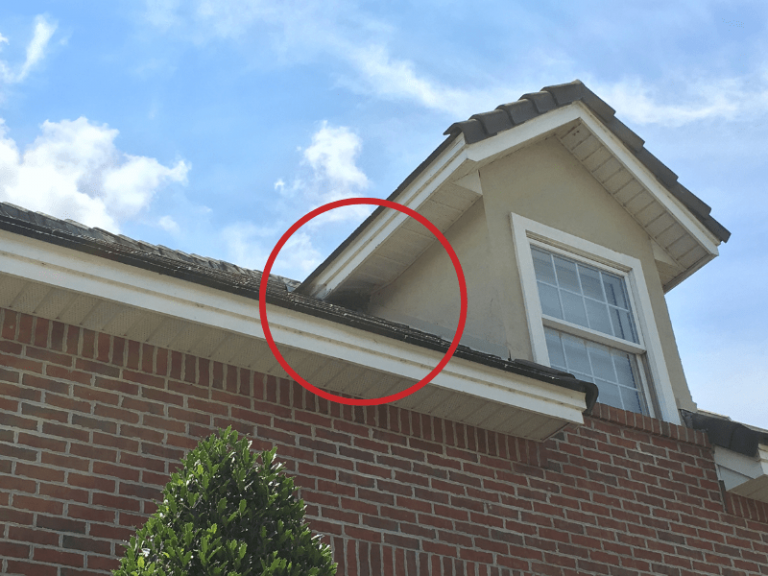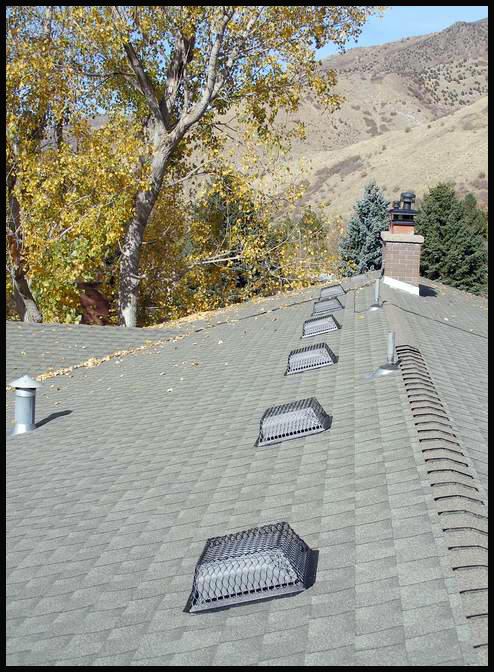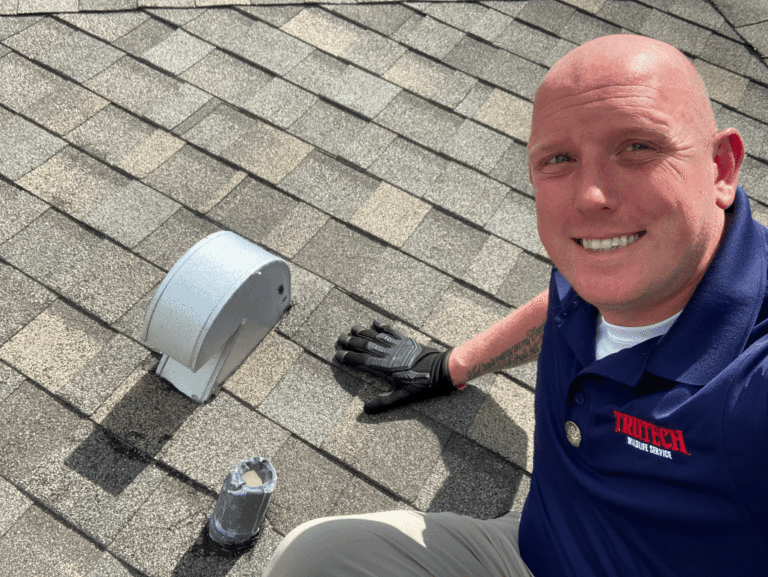Your house is often warm and cozy places, so it’s no accident that animals wind up in our homes—like us, they need the warmth and shelter. Furthermore, your house has food and water sources, which makes them doubly appealing.
Homeowners might notice an animal infestation by hearing strange sounds from attics or walls, smelling strange odors, finding animal droppings, or noticing small holes in the exterior of your home.
Unfortunately, even the most skilled contractors leave weak spots in the construction of a house, so it’s almost inevitable that animals will make their way in eventually. But knowing how and where animals get in is the first step to preventing them from doing so. Here are some areas where animals most frequently access our homes.
The Most Common Entry Points for Nuisance Wildlife
What Kinds of Animals Can Get Inside My House?
The Most Common Nuisance Wildlife in Your House
- squirrels
- raccoons
- bats,
- opossums
- skunks
- birds
- rats
- mice
Find out what animal is in your house!
How Do Animals Get Inside My House?
Residential structural engineering’s fundamental purpose is not to keep local wildlife out. The fundamental purpose are as follows:
- Keep us warm in the winter
- Keep us cool during the summer
- Keep us dry when it rains
- Comply with code
Residential construction varies by geography. In some older homes in Georgia, there are “construction gaps” that span the perimeter of the roof between the roof decking and facia boards.
In states like Florida and Texas with warmer more humid climates, there are certain elements that are found in homes that are not found in cooler, less dry environments. Weep holes are gaps on brick homes near the foundation that allow moisture to exhaust from gaps behind the bricks and between the weather barriers of homes.
Entry Point Size Guide by AnimalEntry Hole Size Guide by Animal
Hole Size Animal Pencil Width Mice, Bats Golf Ball rats, flying squirrels, chipmunks Baseball Squirrels Grapefruit Raccoons
Chimneys
Chimneys, by definition, must be able to open to the sky to expel smoke, and many people don’t bother closing their flues.
As a result, the following animals may swoop right in:
- Squirrels
- Bats
- Raccoons
- Rats/mice
- Birds
Bird nests in particular can restrict the flow of flue gas and create a fire hazard, so it’s important to promptly seek the advice of a wildlife removal service, as it’s illegal to disturb the nest of a native bird without a permit, due to the Migratory Bird Treaty Act. An effective way to bar animals from getting in through your chimney is installing a chimney cap.
Roof
There are many points on your roof that can provide animals with access to your home, including attic vents, turbine vents, roof flashings, gutter lines, and more. Being chock full of vents and joints, the roof is perhaps the most vulnerable area of the house to animals who want in.

Animals that often use the roof as an entry point include:
- Raccoons
- Bats
- Squirrels
- Rats/mice
- Opossums
- Snakes
- Birds
Raccoons are strong enough to create their own entrance. Rodents like squirrels and rats can gnaw through any roofing material to gain access to your attic. One effective measure you can take to limit animal access to your roof is to trim the trees surrounding it, since trees function as ladders for unwelcome animals.
Soffits
A soffit is the horizontal underside of the eave, or the extended portion of the roof over the edge of the house, which usually contains screens to ventilate the attic. An improperly installed soffit at the roof return is one of the most common entry holes.

Animals that typically use soffits as an entry point include:
- Squirrels
- Raccoons
- Opossums
- Rats
Squirrels in soffits are the primary offenders because they can chew right through soffit vents—if they are flimsy enough—and gain direct access to your attic, which also happens to be where they prefer to nest.
Rats, mice, and raccoons can also get in through soffits. If you’d like to repair damaged soffits yourself, first buy some fox urine at a hunting store, soak cotton balls with it, and distribute them around your attic—hopefully that will spook the pests enough to leave so you can conduct your repairs in peace.
Roof Vents
Animals that typically use vents as entry points:
- Raccoons
- Bats
- Squirrels
- Rats/mice
- Snakes
- Birds
Vents on your home can include ridge vents, gable vents, plumbing stack vents, dormer vents, roof turbine vents, and range vents. The purpose is for venting for supply air, return air, and exhaust air. Any of these vents can provide an access point to nuisance wildlife
Typically, the animals you might encounter inside a vent will be small, like mice. But it’s not unheard of for larger animals to try their luck in wriggling through a vent. Dryer, stove, and bathroom vents are all popular points of entry, as they will often have flimsy vent covers that animals can chew right through.

Windows and Doors
That tiny gap in your window trim might not look especially problematic, but the grim reality is that mice can fit through holes just a quarter of an inch in size. Common entry points on windows include the windows themselves (it goes without saying that if you open your windows, make sure they have screens!), window trim, and window flashings. The good news is, small gaps in window trim can easily be sealed with caulk.
Doors present similar opportunities for pests to enter. If there are gaps in your door trim or flashings, or between the door and the floor, animals like mice and snakes will take it as an open invitation. These problems can be mitigated by caulking or installing kick plates.
Utility Access Points
- Rats
- Mice
- Squirrels
- Snakes
- Bats
Where Do Animals Live in Your House?
Just because you’re sharing a home with an animal doesn’t necessarily mean you will see it. Wild animals will avoid people. They will generally stick to the uninhabited spaces in your house.
Animals in the Attics
Seldom visited by humans, attics are prime real estate for critters looking to settle down and raise a family. Unfortunately, the measures they take to access our attics are often destructive.
Animals that are frequently found in attics include:
- Raccoons
- Bats
- Squirrels
- Rats/mice
- Snakes
- Birds
These animals can get into your attic through gable vents, ridge vents, loose shingles, unsecured soffits, and construction gaps on fascia boards.
Animals in Basements and Crawlspaces
Animals that live in basements and crawlspaces include:
- Skunks
- Raccoons
- Rats
- Snakes
- Armadillos
Basements and crawlspaces are enjoyed by pests because they are often clutters, seldom cleaned, and not insulated.
Wildlife typically gets in through the basement door seals, trim, or even from the ground, through crawlspaces. They can also enter through furnace systems or dryer vents.
Garages
Animals that live in garages include:
- Raccoons
- Snakes
- Rats and mice
- Skunks
Garages are a favorite of many pests, as they tend to be cluttered, easily accessed, and also might present food sources in the form of garbage and pet food.
Typically, a garage won’t be as well sealed as other parts of the house, and the most common points of entry are around the garage door itself. Check the weather stripping around your garage door, as this material is known to deteriorate over time and leave small openings.
You can do this by turning off lights in the garage in the daytime and seeing where the daylight shines through. In addition, check for gaps around doors and windows. Small gaps can often be repaired with caulk or expanding foam, while larger gaps might need to be fixed with wooden boards.
Under Porches, Decks, or Patios
Animals that live under porches and decks include:
- Skunks
- Opossums
- Armadillos
- Raccoons
Outdoor additions to homes, such as decks and patios, are one of domestic life’s little joys. Many pests would agree with this sentiment—the underside of decks and patios are often primary targets for nuisance wildlife, as these areas aren’t really monitored by humans, and provide good shelter from the elements.
You might be able to scare away the animal with a bright light under your porch or a radio tuned to a talk station. This is a temporary solution. Wild animals living near people will grow accustomed to and eventually ignore the deterrents.
The most effective way to control animals under your porch or deck is exclusion. Depending on the animal species trench screening and patio blocking will keep the critters out. Before taking such measures, always be sure the area is clear of animals—you don’t want to inadvertently imprison any of your unwanted guests.
How to Get Rid of Animals in Your House
While homes are designed to keep you comfortable and safe, they are not necessarily built to keep wildlife out. Homes are very intricate constructions with a staggering number of joints, vents, and seals—all of which can be potential weak spots that animals can exploit.
While the above preventative measures can be effective at deterring pests, if they’ve already set up shop in your house, it’s best to consult with a professional service like Trutech Wildlife Service for further advice.


